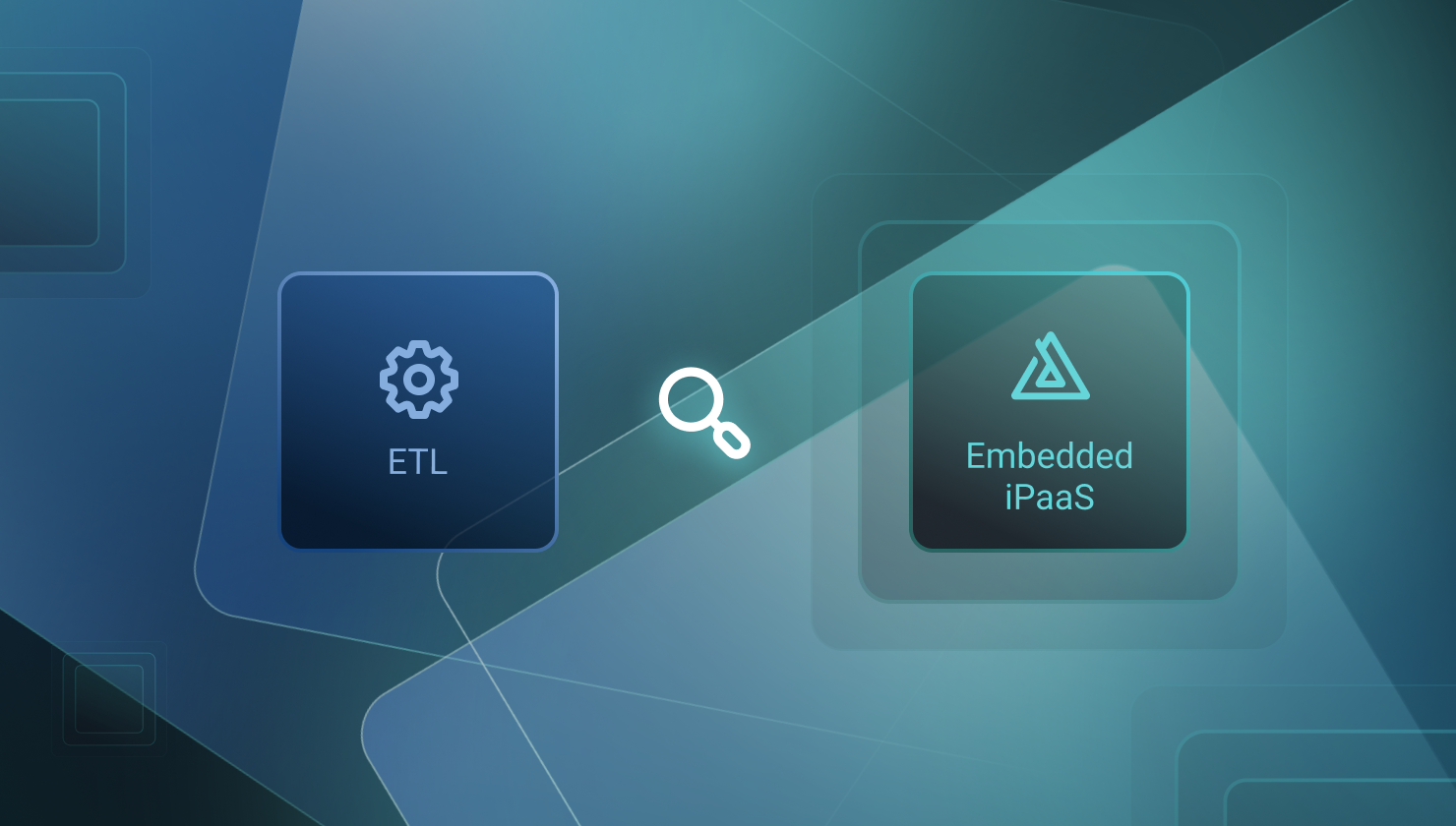If you lead an engineering team for a B2B SaaS company, this scenario may be familiar.
You start with an in-house integration for a customer. Something simple like syncing contacts with Salesforce. And, at first, things go well. But, as customers bring more integration requests, it's not long before your team is buried in the details of auth, retries, and API updates – and work on your core product has just about stalled.
Then, someone says you should use an ETL platform to standardize your integration data flows. And you already have an ETL platform on hand, and people who know how to use it – so there's no learning curve. On the face of it, it seems like a great idea. Right?
Choosing the wrong integration can mean months of wasted development time, frustrated customers, and integrations that buckle under real-world usage. So, before you commit to an ETL platform for your integrations, let’s look at the details.
What ETL platforms do and don't do
ETL (extract, transform, load) platforms were designed to move data around within the enterprise.
Similar to an ETL platform is an ELT platform. It performs the same three primary functions, but in a different order. This other order of operations gives you a permanent store of the raw (un-transformed) data, which can support additional transformations on demand without performing the extraction all over again. For this post, ETL platforms and ELT platforms have the same strengths and weaknesses vis-à-vis embedded iPaaS.
Tools like AWS Glue, Informatica, and Pentaho are excellent at what they're designed for: internal data operations. They help your data team consolidate data from multiple sources so you can build data dashboards, run numerous queries, and do everything else necessary to extract the most value from your data.
As a result, they work well for:
- Collecting data from multiple systems
- Transforming data into different schemas
- Loading data into data warehouses
Those are the things an ETL platform is specifically designed to do.
However, if you try to use one for customer-facing integrations, things are not likely to go well. ETL platform functionality overlaps with an embedded iPaaS to an extent, but that overlap includes little of what you need for a robust integration solution for your customers.
If you were to use an ETL platform for customer integrations, your team will need to write code to:
- Handle customer credentials and auth
- Manually manage deployment, monitoring, and scaling
- Set up detailed logging
- Create a UI for customers to configure and monitor those integrations
- And much, much more
An ETL platform enables massive amounts of data to flow through the pipe, but doesn't provide any integration infrastructure. If you try to use an ETL platform for customer-facing integrations, you'll need to build and maintain all the infrastructure as add-ons to the ETL platform.
Embedded iPaaS brings the missing infrastructure
An embedded iPaaS removes that entire infrastructure burden from your team and allows it to focus on the parts of integrations your customers care about.
This is important because your engineering team is probably stretched thin as it is. You are already attempting to balance new development, product maintenance and uptime needs, and ever-changing customer expectations.
And integrations are now part of customer expectations.
Prismatic's embedded iPaaS is fully managed for SaaS teams that need to deliver customer-facing integrations and don't want the hassle of coding and caring for the infrastructure necessary to enable those integrations for the long term.
Prismatic lets you offload the infrastructure, enabling you to:
- Reduce the amount of integration maintenance and associated customer back-and-forth
- Deliver integrations much faster and with far less code than building everything in-house
- Free up your devs to focus on the features that drive your roadmap forward
You get to move faster for everything from development to onboarding, stop creating tech debt, and focus your team on what makes it valuable to prospects and customers.
Scaling is no longer your problem to solve
As your customer (and integration) numbers grow, Prismatic scales with you automatically. The platform handles:
- Load balancing across customer instances
- Infrastructure provisioning and management
- Security updates and compliance
- Performance optimization
- High availability and disaster recovery
You add 10 new customers with their integrations, and the platform doesn’t even notice. You spin up new instances of an integration for 1000 customers, and the motor keeps running – no drama, no hiccups, no telling customers that they "may experience intermittent integration downtime until issues are resolved."
Choose the right tool
ETL platforms and embedded iPaaS may look similar (both move data from system A to system B) but support entirely different business needs.
- An ETL platform enables you to route massive amounts of data to a data warehouse for extensive analysis. It requires dedicated engineers to build and maintain the data pipelines.
- An embedded iPaaS enables you to deliver scalable, customer-facing integrations as features of your product. It lets engineering focus on your core product, not integration infrastructure.
If it sounds like an embedded iPaaS is right for you, check out our post to learn how Prismatic can supercharge your integration strategy.




